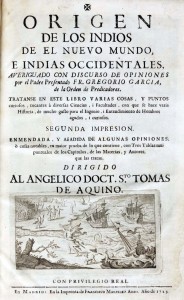 On October 9 book artist Daniel Kelm gave a talk in the library on his life and work. Kelm has a background in chemistry and weaves science into his inventive book structures. He has been commissioned by artists who explore bookish forms to help engineer their non-traditional structures, and he also makes books of his own design that challenge the reader to interact with the books as mechanisms and puzzles. Members of the varied audience–from the chemistry department, Wesleyan University and other parts of Connecticut–had great fun figuring out how the books worked after Daniel’s talk.
On October 9 book artist Daniel Kelm gave a talk in the library on his life and work. Kelm has a background in chemistry and weaves science into his inventive book structures. He has been commissioned by artists who explore bookish forms to help engineer their non-traditional structures, and he also makes books of his own design that challenge the reader to interact with the books as mechanisms and puzzles. Members of the varied audience–from the chemistry department, Wesleyan University and other parts of Connecticut–had great fun figuring out how the books worked after Daniel’s talk.

Comments Off on Daniel Kelm visits!
 García, Gregorio. Origen de los Indios de el Nueuo Mundo, e Indias Occidentales. (Madrid, 1729).
García, Gregorio. Origen de los Indios de el Nueuo Mundo, e Indias Occidentales. (Madrid, 1729).
Nowhere is the general confusion and genuine indecision of the sixteenth and early seventeenth-century theorists of Indian origins more pronounced than in this work—the first book published exclusively on the issue [this is the 2nd edition, it was first published in 1607]. García spent nine years in Peru, beginning in the late 1590s. In order to discover as best he could what the origin of the Indians was, García evaluated what he read, what he was told by both Spaniards and Indians, and what he had seen. The two fundamental assumptions upon which he based his book were that all men and women descended from Adam and Eve, and after the Deluge from Noah (who divided the world giving Asia to Shem, Egypt and Africa to Ham, and Europe to Japheth). He believed that the peoples of the Americas came to the New World from one of the three parts of the known world. García examined in detail all the opinions regarding origins current in Europe at the time–derived from the Carthaginians; the lost Jewish tribes; that Peru was the Ophir of Solomon. The “libro ultimo” contains native accounts of their origins, describing the tribes of Mexico and Peru, derived from a manuscript of Juan de Vetanzos (a companion of Pizarro). He rejected none of the origin theories, but accepted them all collectively—that is, in his view, the ancestors of Native Americans came to the New World from different parts of the known world, at different times, and in different ways.
See the Watkison’s copy.
Comments Off on A European theory of Native American origins
 The New England primer. (Providence: John Waterman, 1775).
The New England primer. (Providence: John Waterman, 1775).
The New England Primer stands at the forefront of early American schoolbooks. The first mention of it occurs in the register of London Stationers in 1683, under the title The New England Primer, or, Milk for Babes. One of its predecessors in England was The Protestant Tutor, which, like its successor, contained the alphabet, the syllabarium, the Lord’s Prayer, the Apostle’s Creed, and the picture of the burning of the Protestant martyr John Rogers. The earliest surviving primer produced in America was printed in Boston, 1727—by which time it was a staple product of the colonial printer. The print shop run by Benjamin Franklin and his partner David Hall printed over 37,000 copies between 1749 and 1766, and only one copy has survived. It has been estimated that from 1680-1830 six to eight million copies were produced (only about 1,500 survive). Portraits of English kings (e.g., George II and III) were replaced eventually by famous Americans (e.g., John Hancock, Samuel Adams, and George Washington). Around 1790 the primers were secularized, and little boys and girls ceased to be promised salvation or threatened with eternal fire; girls were instead warned that “pert Miss Prat-a-pace” was to have no treats unless she turned into “pretty miss prudence,” and that good boys would be rewarded with “credit and reputation,” whereas bad ones would live in beggary.
We have dozens of examples of the NEP, and thousands of other early American schoolbooks in our Barnard Collection.
Comments Off on Cornerstone of American Education
 Henry Minot ’17 is from Fairfield, CT, majoring in Classics, and is the Music Director of WRTC, Trinity College’s radio station, and the House Manger of the Mill, the campus arts collective. Henry’s project will be to create an “archive” of 18th-century Revolutionary War-era documents (like a series of letters, and a map) centered around a fictional man in Connecticut who is attempting to raise a militia company for the war effort.
Henry Minot ’17 is from Fairfield, CT, majoring in Classics, and is the Music Director of WRTC, Trinity College’s radio station, and the House Manger of the Mill, the campus arts collective. Henry’s project will be to create an “archive” of 18th-century Revolutionary War-era documents (like a series of letters, and a map) centered around a fictional man in Connecticut who is attempting to raise a militia company for the war effort.
 Stefan Kramer (IDP) is a History major who works in the IT industry and has experience and schooling in film-making. Stefan will create a short film (working title, “What the Font?!”) which will feature various fonts as characters in a short, humorous narrative, each with its own voice and characteristics–using our excellent book history collections.
Stefan Kramer (IDP) is a History major who works in the IT industry and has experience and schooling in film-making. Stefan will create a short film (working title, “What the Font?!”) which will feature various fonts as characters in a short, humorous narrative, each with its own voice and characteristics–using our excellent book history collections.
The DEADLINE for applications for a spring Fellowship is December 1st!
Comments Off on Introducing our Fall Creative Fellows!
 García, Gregorio. Origen de los Indios de el Nueuo Mundo, e Indias Occidentales. (Madrid, 1729).
García, Gregorio. Origen de los Indios de el Nueuo Mundo, e Indias Occidentales. (Madrid, 1729).



